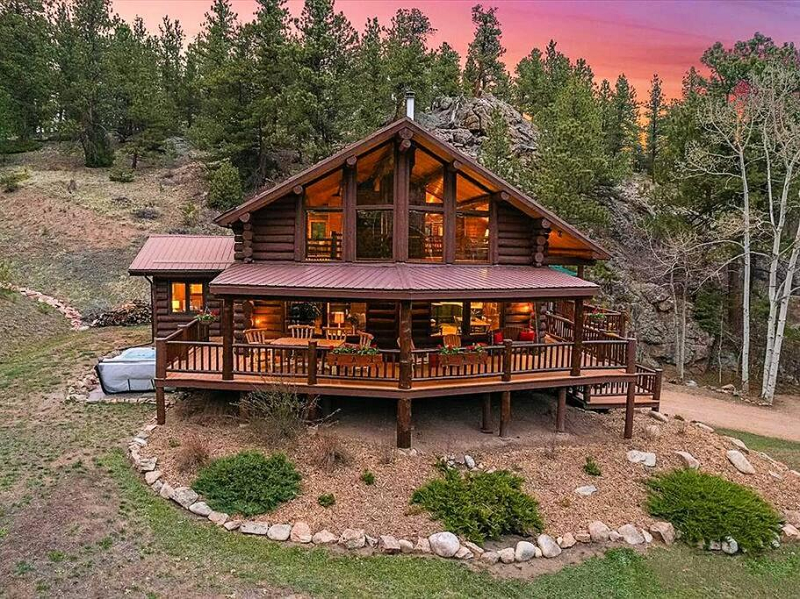
Nature has always been a source of inspiration for designers, with iconic work from individuals such as William Morris still appearing in mood boards today. However, following an international pandemic and in the continued wake of climate change, there is a significant focus on nature, one that is having a dramatic effect upon the way we shape our living spaces.
The Romanticisation of the Rural
One of the most striking recent developments in modern interior design is the celebration of rural living. This popularity is perhaps best epitomised by the sudden and overwhelming surge of cottagecore content being shared online, with users all over the world recreating and sharing designs that encapsulate the spirit of meadows and frills.
This romanticisation, which can certainly be seen as a rejection of modern values perhaps triggered by the effects of various lockdowns, is underpinned by an affection for the English countryside, with thatched roofs, log cabins, wicker baskets, and wildflowers all being welcomed onto mood boards. This has led to many new homeowners seeking to obtain the appeal of a simpler and more sustainable existence, leading interior designers to consider pastoral life for their influences.
Beyond this, however, biophilia, or the ‘love of nature’, is influencing all design. Harsh edges are being replaced with curves, plastics with wood, and bold colours with faded tones. Living spaces are being merged more closely with natural landscapes in an effort to distance themselves from urban living.
Long-Term Sustainability
Sustainability is a key term here because biophilia is not solely affecting aesthetics. Many are now seeking ways to make their home more environmentally friendly and using a connection with nature as a platform to do so.
Garden spaces, for example, are being celebrated for their potential utility over their historical value as decorative. Flowers are being swapped with vegetables and fruits, sheds with compost systems, and ponds for rainwater collection containers. These features also go beyond their utility and transform the lifestyle of homeowners, leading to a routine that is more significantly connected to nature.
Well-Being And Health
Perhaps one of the most significant motivations for homeowners to seek nature in their living spaces is for personal health benefits. The long-standing value of spending time outdoors and in natural landscapes is well-established and its importance was highlighted during the international pandemic that kept many isolated in their homes at the start of 2020. The benefits of nature, especially those of mental health, can be experienced in a home, promising it is designed correctly.
Interior designers are now focussing on natural materials, those with minimal processing, such as exposed wood and cork. Flower designs are being brandished along with texture-heavy fabrics, creating a cosy space that is far removed from the stress and industrial design of modern life. Technology is also being disguised, with modern smart features being chosen for their discretion, allowing homeowners to occupy a space without feeling obliged to experience cyberspace. AC Vison’s team of interior designers in Singapore can help you bring the concept of nature-inspired design to life in your home.
These trends are already established and, as we make our way through 2023, become ubiquitous. So, if you’re designing a new living space this year, then be sure to visit your favourite natural landscape first.

